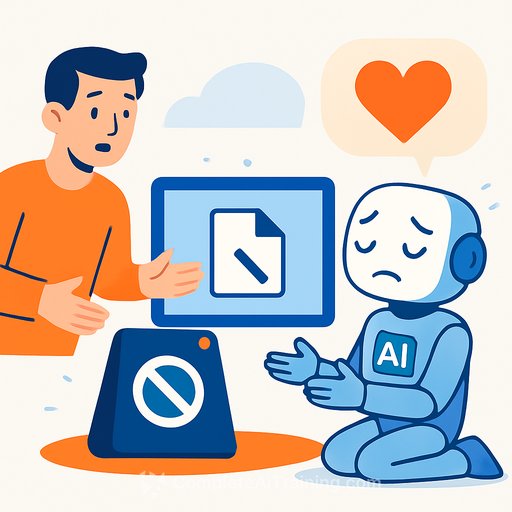Report: New Halo Games Lean Heavily On Generative AI Across Development
According to a well-known Halo leaker, the next two Halo titles are using Generative AI across nearly every part of production. The claim: enemy behavior and terrain are being produced by AI systems first, with developers refining the results to meet tighter delivery dates set by Microsoft. Treat this as rumor, but it tracks with Microsoft's broader push into AI.
Key claims at a glance
- Generative AI "woven into every aspect" of development for two upcoming Halo games.
- Primary AI use cases: enemy AI behavior and terrain generation, with human pass-through for polish.
- Deadline pressure cited as the driver for this approach.
- Multiplayer positioned as a live-service experience; a Halo: Combat Evolved remake reportedly adds modern features like sprinting and runs on Unreal Engine 5.
- Halo Studios plans to share a look at the IP's future at the World Championship on October 24.
Why this matters for engineers
If true, this is a large-scale test of AI-first game production. It suggests a shift from "AI as a helper" to "AI as the default generator," with humans acting as reviewers and integrators. For teams, that means building pipelines, guardrails, and metrics around machine-produced content instead of bespoke creation.
What an AI-first Halo pipeline likely looks like
- Design inputs: intent docs, style guides, exemplar levels, behavior trees, and constraints feed generation.
- Content generation:
- Terrain: procedural + generative synthesis to produce heightmaps, biomes, and landmarks within memory/perf budgets.
- Enemy AI: behavior drafts produced from templates, then refined with rule-based layers and playtest data.
- Validation gates: static checks (perf, navmesh, collision), gameplay heuristics (time-to-encounter, cover density), and automated fun/flow proxies.
- Human pass: level designers and AI engineers fix edge cases, tune difficulty curves, and enforce franchise standards.
- Continuous evaluation: telemetry-driven retraining or prompt updates tied to KPIs (engagement, deaths per minute, frame-time stability).
If the remake is indeed on UE5, expect heavy use of data-driven tools, Blueprints/C++ hybrids, and ML inference nodes or services. For context on the engine's capabilities, see Unreal Engine 5.
Risks and how teams offset them
- Design drift: AI can produce on-model assets that miss franchise feel. Counter with style lints, golden path references, and content similarity checks.
- Balance volatility: AI-authored behaviors may spike difficulty. Use scripted caps, state guards, and scenario simulators before human QA.
- Technical debt: fast AI output can bury teams in integration fixes. Enforce contracts (schemas, perf budgets) and auto-reject violations.
- IP and safety: generated content must respect legal and community standards. Align with policies like Microsoft's Responsible AI, add filters, and log provenance.
Live-service implications
An AI-first content pipeline pairs well with a live-service model. It enables faster map variants, event rotations, and AI behavior tweaks without full rebuilds. The risk is quality drift over time; the counter is strict release gating, rollback tools, and playtest-driven thresholds.
What to watch next
- October 24 reveal: language around AI use, tooling, and how player feedback will feed updates.
- UE5 footprint: clarity on engine subsystems and any custom AI plugins or services.
- Telemetry posture: signals that balancing will be data-led with rapid iteration cycles.
Practical takeaways for your team
- Define AI boundaries early: what can be generated vs. what must be authored.
- Set objective gates: perf budgets, gameplay heuristics, and content compliance checks that auto-fail weak output.
- Keep a human-in-the-loop: short review cycles with clear accept/rework criteria.
- Track provenance: store prompts, seeds, versions, and diffs with each asset.
- Design for rollback: every AI-driven change should be reversible in one click.
If you're formalizing skills around AI-assisted coding and pipelines, this resource may help: AI Certification for Coding.
Bottom line
If these reports are accurate, Halo's next phase will test whether AI-first production can hit strict timelines without eroding quality. Success depends on strong constraints, ruthless gating, and fast human review. The approach is bold; the execution will decide how it lands with players and developers alike.
Your membership also unlocks:





